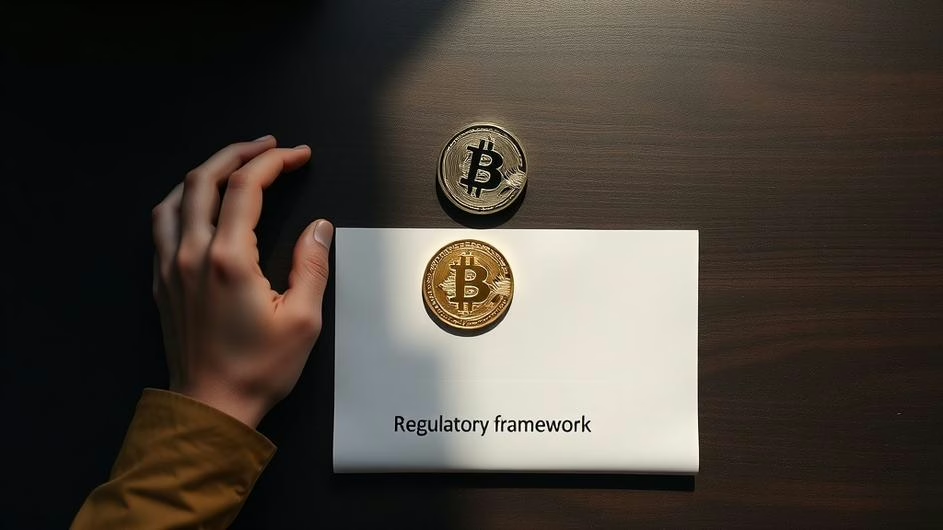
Crypto’s September Surge: New Market Leaders, Regulatory Shifts, and the Stablecoin Race for Dominance
September 2025 feels different for crypto. We’re watching key players make bold moves while governments finally get serious about setting ground rules for digital assets. The month’s bringing us everything from explosive token rallies to landmark regulatory proposals, and honestly? It’s starting to look like the pieces of Web3’s next chapter are falling into place.
What makes this moment special isn’t just the price action or policy updates. It’s how these forces are converging. Market momentum, regulatory clarity, and infrastructure buildout are happening simultaneously, creating opportunities that could reshape how we think about digital finance.
Robinhood Hits the Big League While MicroStrategy Gets Snubbed
Robinhood just landed a coveted spot in the S&P 500, and the timing couldn’t be more telling. The trading platform’s shares have rocketed over 150% this year, driven by strong earnings and growing appetite for both stock and crypto trading. This isn’t just another corporate milestone. It’s crypto’s clearest signal yet that it’s breaking into mainstream finance.
But here’s the twist that caught everyone’s attention. MicroStrategy, the company that basically wrote the playbook for Bitcoin treasury strategies, didn’t make the cut despite hitting the market cap requirements. The contrast is striking. While Robinhood gets rewarded for bridging traditional and digital assets, MicroStrategy’s pure-play Bitcoin approach still faces resistance from traditional finance gatekeepers.
What does this mean for crypto investors? Simple. The path to mainstream acceptance isn’t just about adoption anymore. It’s about integration. Companies that can seamlessly blend traditional finance with crypto services are winning the institutional approval game.
This Week’s Market Rollercoaster: Winners, Losers, and What It Means
Crypto markets never sleep, and this week proved it once again. Some tokens absolutely exploded while others got hammered, creating the kind of volatility that keeps traders glued to their screens.
MemeCore led the charge with a jaw-dropping 170% weekly surge, tapping into the same retail energy that powered its July breakout. Pump.fun also caught fire, though traders are split on whether this rally has legs or if we’re heading for another classic crypto pump-and-dump scenario.
On the flip side, established players like Conflux took a beating, dropping nearly 11% as bulls couldn’t break through key resistance levels. Pi and Cronos rounded out the week’s losers, proving that even previous high-fliers aren’t immune to market gravity.
Here’s what’s interesting though. These wild swings aren’t just random noise. They’re reflecting real shifts in investor sentiment and capital allocation. Retail money is chasing new narratives while institutional funds are getting pickier about fundamentals. For traders, this creates both opportunity and risk. For long-term investors, it’s a reminder that crypto volatility remains the price of admission to potentially outsized returns.
Washington Finally Gets Serious About Crypto Rules
The regulatory front is where September 2025 might prove most consequential. The U.S. Senate just unveiled revised versions of the Responsible Financial Innovation Act and the Crypto Market Structure Bill, and these aren’t your typical vague policy proposals. These bills get specific about crypto classification in ways we haven’t seen before.
For developers and builders, the news gets even better. The legislation explicitly protects staking activities and decentralized physical infrastructure networks (DePIN) from being classified as securities. That’s huge for anyone building in these spaces. We’re also seeing clearer role definitions between the SEC and CFTC, which should reduce the regulatory uncertainty that’s plagued crypto development for years.
But here’s the part that really matters for the ecosystem’s future: developer protections. The bills aim to shield developers from regulatory overreach by clearly defining who’s responsible for what in the crypto stack. Token creators, network participants, and financial intermediaries each get their own regulatory boxes, reducing the fear of retroactive enforcement that’s chilled innovation.
Why should traders and investors care about regulatory minutiae? Because clear rules attract institutional capital. And institutional capital stabilizes markets while creating new opportunities for retail participation.

The Stablecoin Infrastructure Race Heats Up
While everyone’s watching Bitcoin and Ethereum price action, the real infrastructure battle is happening in stablecoins. 1Money just emerged as a major player, securing 34 U.S. Money Transmitter Licenses plus a Bermuda Class F license. That’s not just regulatory compliance, it’s regulatory dominance.
The numbers tell the story. Stablecoins already represent about 10% of crypto’s total market cap, and projections show growth from $214 billion today to over $300 billion by 2027. For institutional players looking for compliant on-ramps to digital assets, having a fully licensed infrastructure provider isn’t nice to have. It’s essential.
1Money’s positioning illustrates a broader trend: regulatory readiness is becoming the ultimate competitive advantage in crypto infrastructure. As DeFi and real-world assets converge, institutions need partners they can trust with compliance, transparency, and legal certainty.
For crypto users, this infrastructure buildout means better liquidity, lower fees, and more reliable access to digital dollar services. For the broader ecosystem, it’s laying the groundwork for the next wave of institutional adoption.
What’s Next for Crypto and Web3?
Looking at September’s developments, we’re seeing convergence happen in real time. Market innovation, regulatory progress, and infrastructure maturation aren’t happening in isolation. They’re reinforcing each other, creating momentum that feels different from previous cycles.
Robinhood’s S&P 500 inclusion shows retail investors are embracing crypto as part of diversified portfolios. The regulatory clarity emerging from Washington gives developers and institutions the confidence to build and invest long-term. Meanwhile, infrastructure providers like 1Money are creating the compliant pathways institutions need to participate at scale.
The result? We’re probably looking at a crypto ecosystem that’s more integrated with traditional finance, less volatile over time, and more focused on real utility than pure speculation. That doesn’t mean the explosive gains disappear, but it does mean they’ll increasingly be backed by fundamental value creation rather than just hype cycles.
For anyone watching Web3’s evolution, September 2025 might be remembered as the month when crypto finally grew up. Not in a boring way, but in a way that creates sustainable value for users, developers, investors, and the broader financial system.
The pieces are in place. Now we get to see what gets built on top of them.
Sources
- “Robinhood Soars on S&P 500 Inclusion as Strategy Gets Snubbed,” Cryptonews, September 6, 2025.
- “Crypto market’s weekly winners and losers – PUMP, ZEC, PI, CRO,” AMBCrypto, September 7, 2025.
- “Regulators Race to Define Crypto’s Future Amid Governance Crises,” AInvest, September 6, 2025.
- “The Rise of Regulated Stablecoin Infrastructure and 1Money’s Strategic Position in the Market,” AInvest, September 5, 2025.
- “Senate Bill Aims to Untangle Crypto’s Regulatory Knot,” AInvest, September 7, 2025.





















































